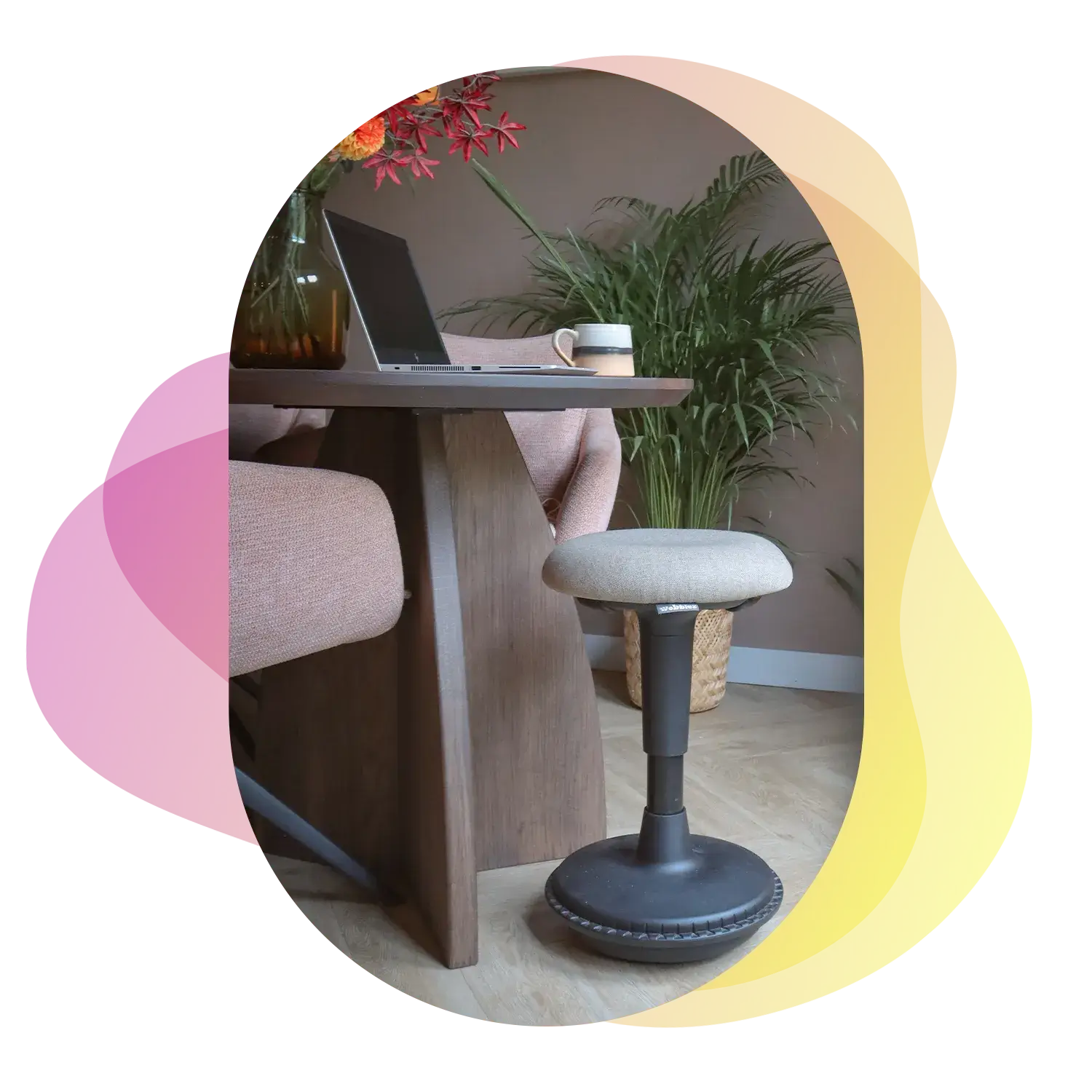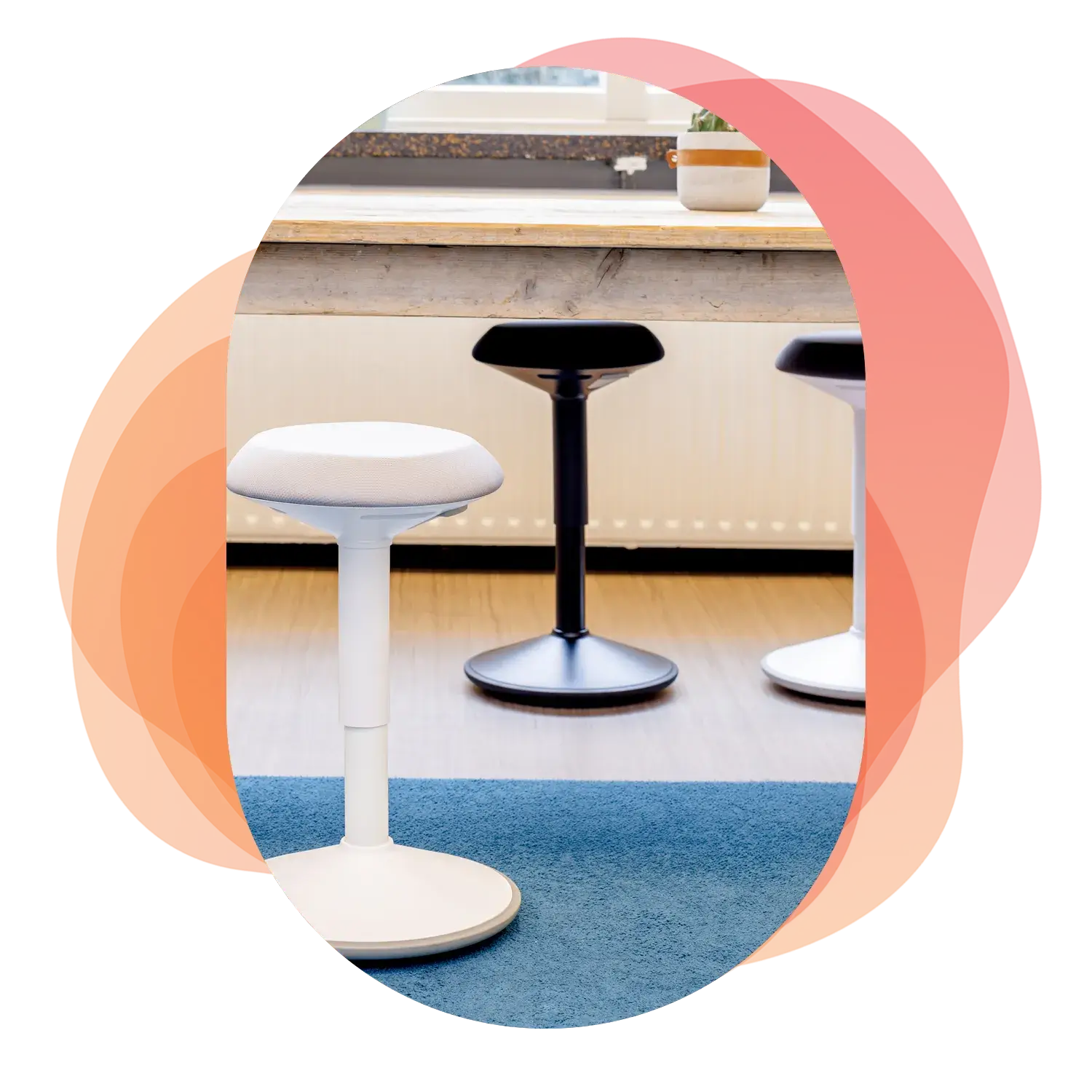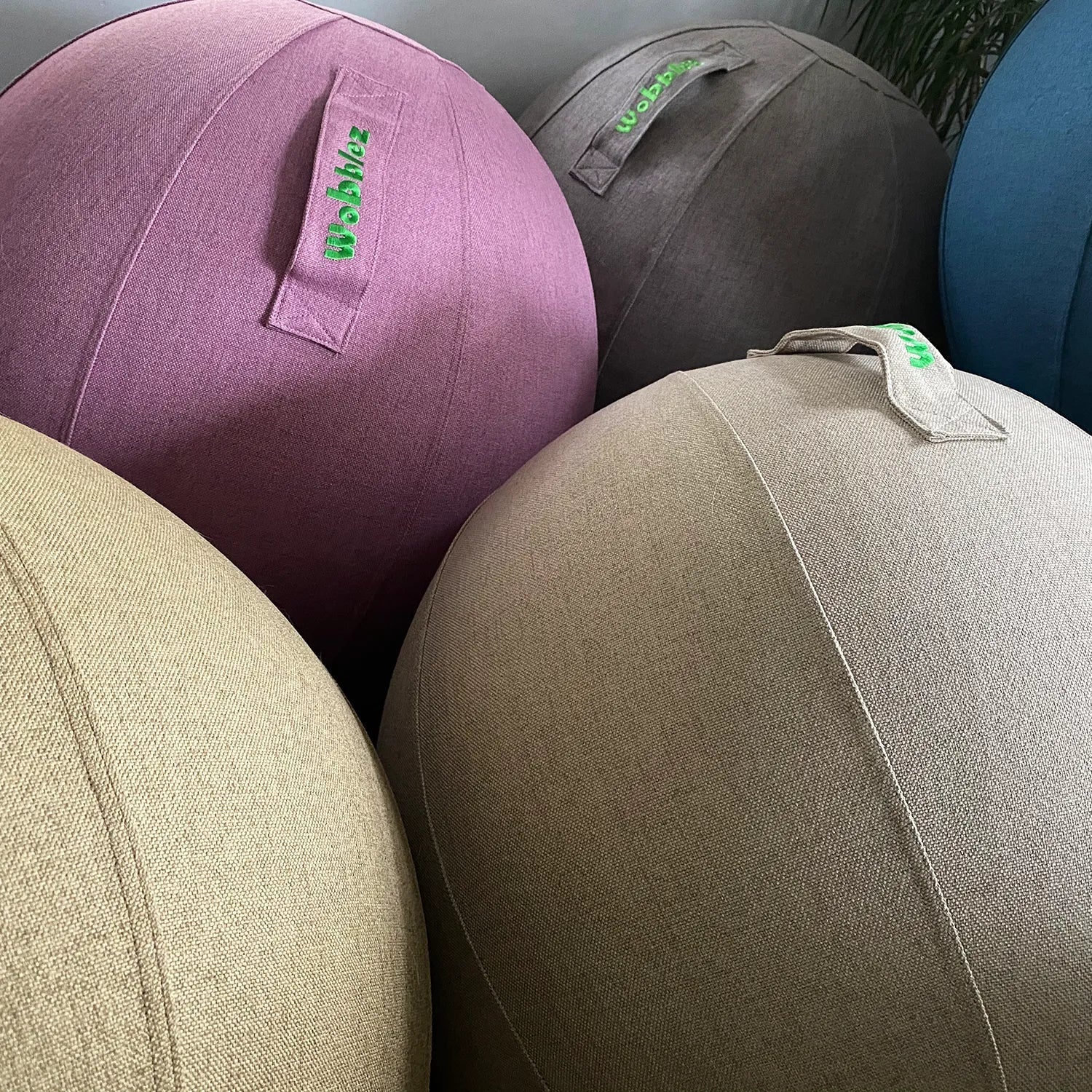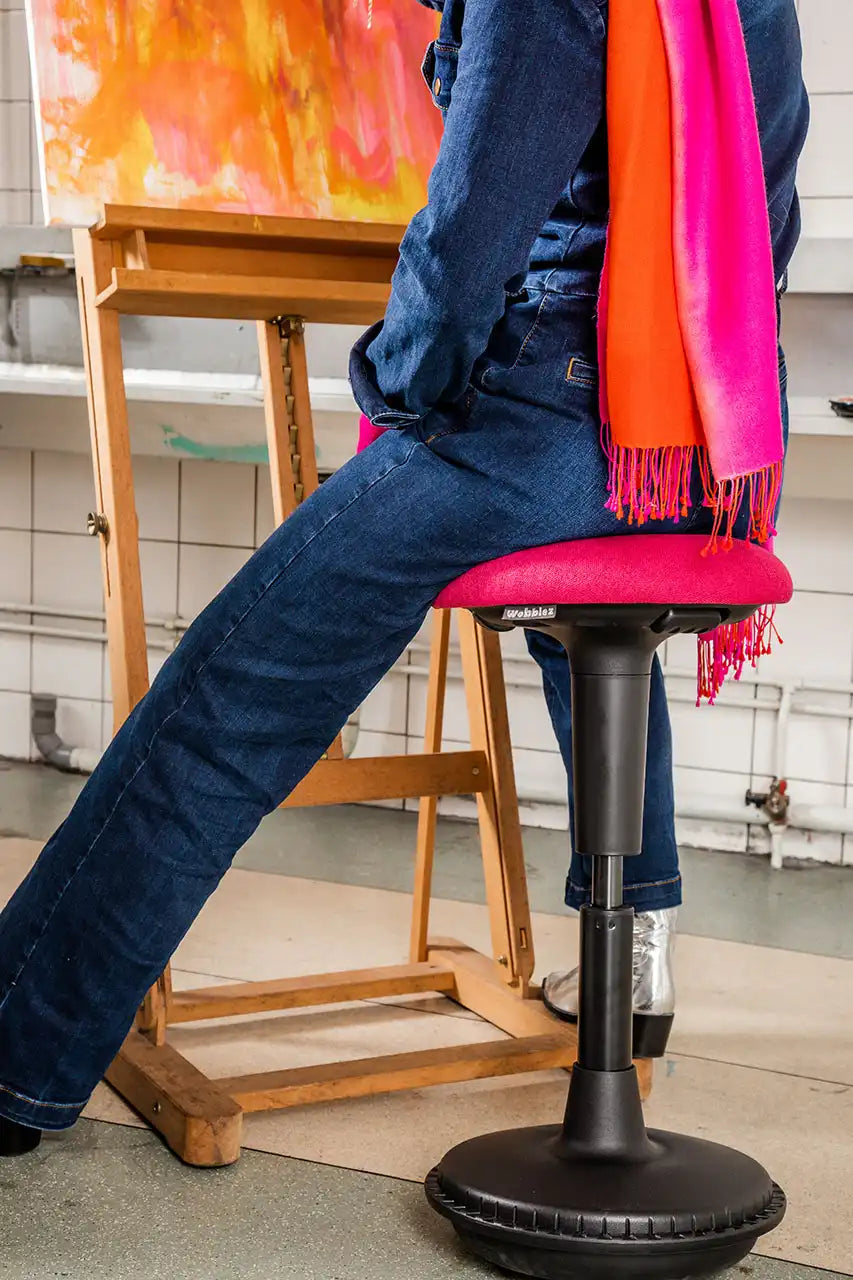If you regularly suffer from lower back pain when sitting, you are certainly not alone. Many people worldwide experience discomfort and pain in their lower back due to sedentary lifestyles, lack of exercise, or sitting for long periods of time in the office. Fortunately, there are a number of effective lower back exercises that specifically target strengthening and stretching the lower back muscles, which can help relieve pain and improve mobility.
Performing regular lower back exercises and sitting actively can definitely help reduce lower back pain and improve overall back health. Combine these exercises with a healthy lifestyle and ergonomic sitting posture to live a pain-free life, so read on!
Lower back pain?
If you often suffer from lower back pain, other complaints may also occur, such as stiffness in the hip flexors and tension in the shoulders, neck and upper back. These discomforts are often the result of sitting in an incorrect position for a long time.
Do you already feel bad sitting while reading this? Then it is time to take action! Here is an effective exercise that can help you with that! According to many, this is one of the better exercises for the lower back. Lie on your back and pull one knee to your chest while keeping the other leg straight. Hold this position for 20-30 seconds and switch legs. This exercise helps to relax the lower back and stretch the hip flexors.
By performing these exercises regularly and paying attention to your sitting posture, you can significantly improve your lower back, but also your hip flexors and upper back.
More Lower Back Exercises
There are several lower back pain exercises that specifically target pain relief and strengthen the lower back muscles:
- Planking is one of them! This static exercise is great for strengthening the core muscles, including the lower back. Lie on your stomach, prop yourself up on your forearms and toes, and keep your body in a straight line without letting your back sag. Hold this position for as long as possible and repeat several times.
- The Cat-Cow stretch is also one of the better lower back exercises. Get on your hands and knees and alternately move your back up and down, as if you are imitating the movement of a cat. As you inhale, lower your stomach and look up (Cow), and as you exhale, round your back and drop your chin to your chest (Cat). Repeat 5-10 times. This dynamic exercise improves the flexibility of the spine and relieves tension in the shoulders and neck. It also helps loosen and relax the lower back muscles.
- Have you heard of glute bridges? This is another one of the best exercises for the lower back! Lie on your back with your knees bent and lift your hips up, squeezing your glutes. This exercise helps strengthen your glutes and lower back. You can do this at home or at the gym.
- Regular walking can also do wonders for relieving lower back pain. It increases blood circulation, strengthens your back muscles, and improves mobility.
The sitting ball is your new best friend
In addition to the various lower back pain exercises, a 65 cm sitting ball or the 75 cm sitting ball is also a great solution. The sitting ball is of course fun to sit on, but it is also a great way to improve your sitting posture and strengthen your core. The instability of the ball challenges you to maintain your balance, which strengthens your back and abdominal muscles. In addition, the ball is light and easy to move, so you can use it in any room. From working from home to yoga exercises!
One of the most important advantages of the sitting ball is that it forces you to stay active. While you sit on the ball, your muscles are activated, which promotes blood circulation and provides more energy throughout the day. No more sleepy moments at your desk: a sitting ball prevents back pain, improves your blood circulation and keeps you energetic throughout the day!
How often should I do lower back exercises?
If you are serious about improving the health of your lower back, it is recommended that you do specific lower back exercises at least two to three times a week. These exercises are important for strengthening the muscles around your lower back, which will give you more stability, but also reduce the risk of injuries and chronic pain. Regular training will make these muscles stronger, but also more flexible. This will help you cope better with daily activities and prevent back pain in the future.
Are there specific active sitting office chairs that are recommended?
Absolutely! There are a lot of active sitting office chairs on the market, and it’s important to choose a model that suits your body type. A great option in this category is the ergonomic wobble stool. This modern seating solution is designed to promote a dynamic and active way of sitting, allowing you to spend your workday feeling both healthy and energetic.
Many of us spend hours at a desk, often without thinking about the impact our sitting posture has on our health. Traditional office chairs often don’t provide the necessary support for active sitting, which can lead to discomfort such as back pain, stiffness in the neck and shoulders, and even fatigue.
Combine Lower Back Exercises with a Good Seating Solution
The wobbly motion that an ergonomic stool encourages keeps your back muscles active and engaged. These subtle movements combined with lower back exercises help improve your posture, but also strengthen your core muscles. As you sit on the stool, you automatically make small adjustments to stay balanced. This may sound like extra effort, but it is actually a natural and intuitive way to keep your body moving without you even realizing it!
What makes this saddle stool so unique is the rounded base that allows for a slight wobbly motion. This means less stress on painful areas and better circulation throughout your body!






